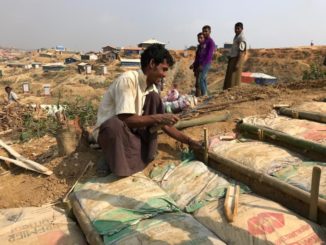
A look at how locals are finding ways to coexist with their animal neighbours in Australia and Bangladesh.
The relationship between humans and animals has always been one with elements of conflict, and as the number of people on the planet continues to increase, the relationship is becoming more strained and unbalanced.
With the world’s human population approaching eight billion, sprawling human settlements and activities are encroaching on animal’s habitats more than ever.
And when humans and animals fight for territory, it’s often the animals that lose. Extinction data estimates that 1,000 species are lost per year, mostly due to human-caused habitat destruction and climate change.
earthrise went to Bangladesh and Australia to examine ways of reducing human-wildlife conflict.
In Brisbane, Australia, residents and experts are employing a variety of methods to save the koala, whose survival is threatened by loss of habitat. And in the Sunderbans Mangrove Forest in Bangladesh, villagers are learning to coexist with their tiger neighbours and save the iconic animal in the process.
Downtown koalas
Queensland is one of the most rapidly urbanising areas of Australia.
As the human population moves further into the pristine bush land, the habitat of the country’s unique wildlife is lost. Unfortunately for the koala, the habitat that most suits them is the same preferred habitat of humans.
 |
| A koala capture team surrounds a tree with a tracked koala in it. The koala will be caught and taken in for a health check. [Josh Zaini/ Al Jazeera] |
Brisbane and its surrounding areas now have an increasingly urban koala population, while large infrastructure projects are affecting huge swaths of their land. This is having a dramatic effect on the koala population which has declined by two-thirds in 20 years.
“They get killed on the roads because often they cross at night when they’re difficult [for drivers] to see,” says Jon Hanger, a wildlife vet and founding member of the Koala Research Network.
“This road is really a hotspot for koala deaths for this area, certainly where they get on the rail lines, the busy rail lines where you get trains running every couple of minutes… [they are] exposed to significant injury, and death obviously, and so there’s really a whole range of threats that they’re exposed to in this sort of environment.”
In an attempt to save the koalas, residents and scientists are working on an array of solutions – from the low-tech of planting trees to the high-tech of thermal drones – which are being put in place across Southern Queensland to help counteract the decline of the precious animal.
Lessons learned from these techniques can be applied across the world, in places where vulnerable species are in danger from encroaching human settlement.
Tiger turf wars
 |
| The local Tiger team practise with a ‘human tiger’. The group consists of a network of volunteers dedicated to human-tiger conflict. [Phil Jones/ Al Jazeera] |
The Sundarbans of Bangladesh is a mangrove forest six times the size of Greater London.
It’s home to one of the world’s last remaining tiger populationsand is surrounded by over a million people – a human population that has doubled in size in the last 40 years.
With only 100 tigers thought to be remaining in the area, every individual tiger’s survival counts.
But he locals’ relationship with the tigers has been hostile at best. The tigers kill or maim villagers and in retaliation the villagers hunt the tigers, causing a vicious cycle.
A local organisation called Wild Team are pioneering an education scheme in the local communities.
Part of the scheme is to train locals as “tiger response teams” to scare off tigers that enter human communities, preventing them from the fate of being killed by a mob.
“Ten years ago, the tigers were actually beaten to death by the villagers,” says Mahbub Alam, one of the pioneers of the Tiger Scouts. “We have been able to slowly motivate the local people. Motivate them that it cannot be killed. We have to keep the tiger alive.”
Visits: 2




Be the first to comment